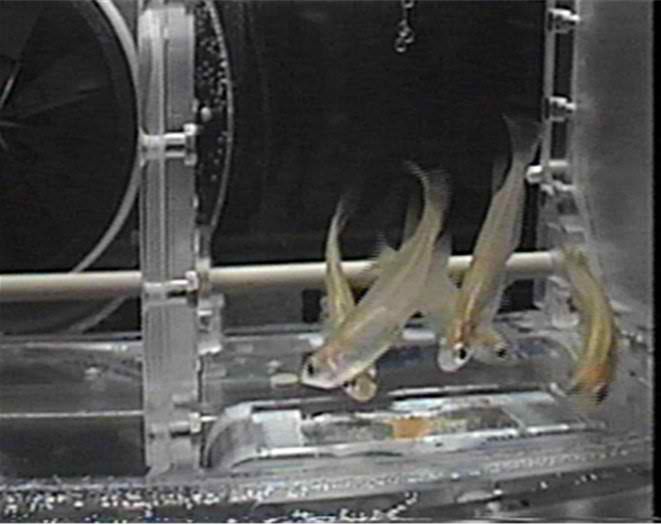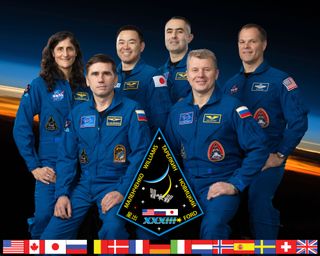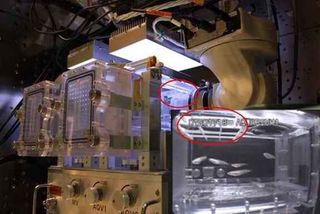Next Space Station Crew to Try 'Fishy' Science

When the next Russian-built Soyuz capsule launches to the International Space Station in October, it will deliver three new crewmembers to the orbiting outpost. But the trio of spaceflyers will be sharing their ride with some special cargo: 32 small fish for a science experiment at the space lab.
NASA astronaut Kevin Ford and Russian cosmonauts Evgeny Tarelkin and Oleg Novitskiy are scheduled to launch to the International Space Station on Oct. 15 from the Baikonour Cosmodrome in Kazakhstan. Their Soyuz TMA-06M capsule will also be carrying 32 medaka fish — a type of fish native to Southeast Asia — to the orbiting complex.

"They'll be on our Soyuz with us — 32 fish, plus the three of us," Ford told reporters in a news briefing Thursday (July 26).
The medakas will become part of an experiment carried out on the station to investigate the effects of microgravity on fish. The astronauts aboard the outpost will monitor changes in the fish as they live in orbit. [7 Everyday Things that Happen Strangely In Space]
"When we come onboard, one of the first items will be to get these fish transferred and into their habitat and get the experiment underway," Ford explained.
The fish will stay in a special aquatic habitat that is being delivered to the space station by a robotic Japanese cargo freighter. The Japanese unmanned H-2 Transfer Vehicle-3, or HTV-3, launched into orbit on July 20, and arrived at the space station today (July 27).

Scientists are particularly interested in how the skeletal systems of fish change in the near weightless environment aboard the space station, said Julie Robinson, an International Space Station program scientist.
Sign up for the Live Science daily newsletter now
Get the world’s most fascinating discoveries delivered straight to your inbox.
It has long been known that exposure to microgravity for extended periods of time can carry negative consequences, including loss of muscle and bone density. To prevent lasting harmful effects, space station astronauts adhere to rigorous exercise regimens, and doctors on the ground closely monitor their health.
But experiments such as the one with medaka fish do not hold potential benefits for only spaceflyers. The results of these types of studies can have far-reaching effects on Earth, too.
"It's an experiment, essentially, for osteoporosis," Ford explained.
The lessons learned from studying the skeletal systems of fish in space can inform scientists on the ground about how bones degrade over time here on Earth. This type of scientific research is part of what inspired the motto for this space station-bound crew: From the Earth, for the Earth.
"The idea is that the space station is up there for everybody, and even though it's essentially 15 countries that put [forward] their resources, it's really there for everybody on the planet."
But for Ford, Tarelkin and Novitskiy, the medaka fish will also be their companions for the thrilling journey to the International Space Station.
"I won't have my 'gone fishing' hat, though," Ford joked.
This story was provided by SPACE.com, a sister site to LiveScience. Follow Denise Chow on Twitter @denisechow or SPACE.com @Spacedotcom. We're also on Facebook and Google+.

Denise Chow was the assistant managing editor at Live Science before moving to NBC News as a science reporter, where she focuses on general science and climate change. Before joining the Live Science team in 2013, she spent two years as a staff writer for Space.com, writing about rocket launches and covering NASA's final three space shuttle missions. A Canadian transplant, Denise has a bachelor's degree from the University of Toronto, and a master's degree in journalism from New York University.











